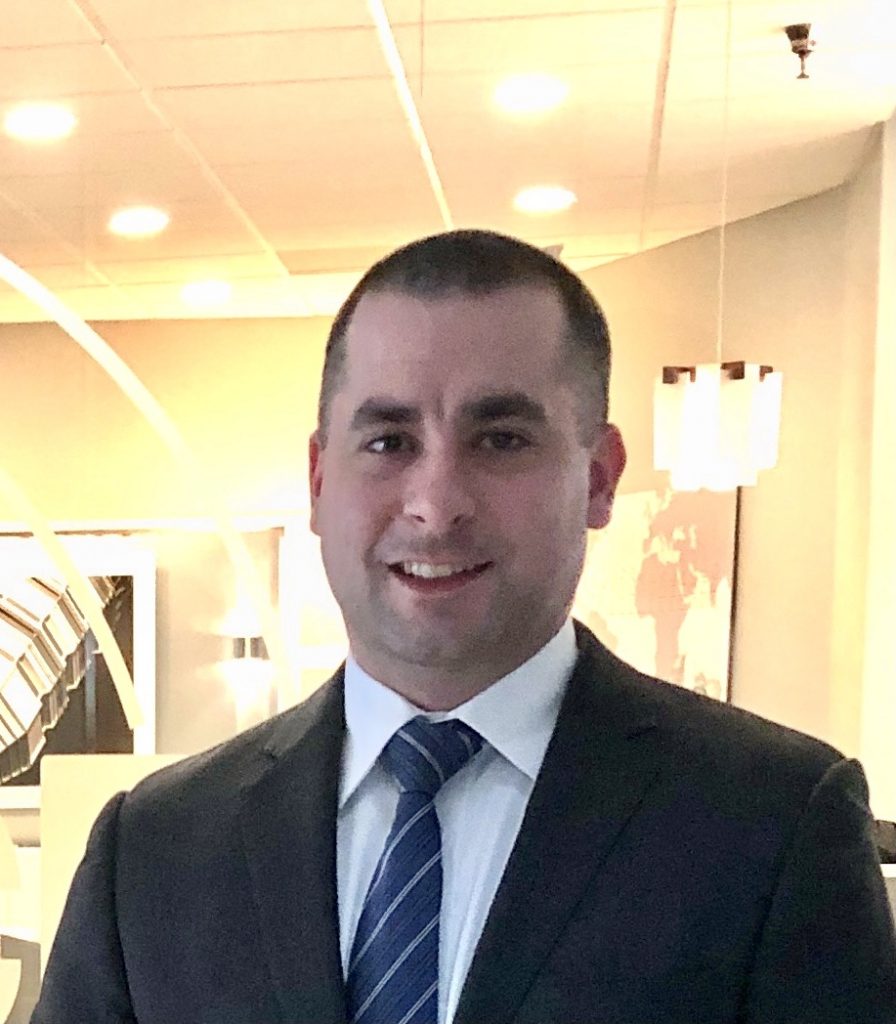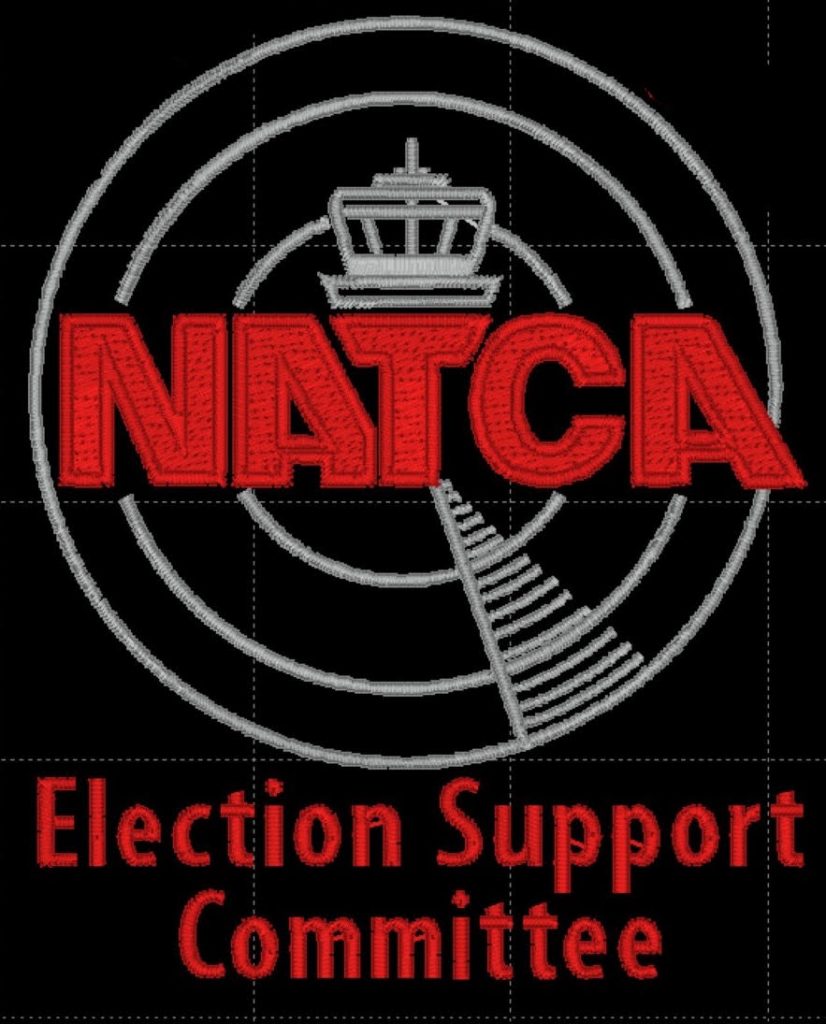
February 2022 New England Bi-Monthly Regional Update #2
From Bryan Krampovitis, NATCA New England ARVP

NCEPT: a topic everyone loves to hate. As we go into another round of NCEPT, I wanted to take a minute to go over the history of NECPT, or more importantly, the history of pre-NCEPT, because while some people are not happy with the results of the NCEPT process, they are also not familiar with the process prior to NCEPT.
To call the process prior to NCEPT a “process” is actually an exaggeration. Prior to NCEPT, around 2015, there was not a standard process to move around the system. When an air traffic manager would decide they wanted to pull an ERR list, (either at their discretion or with approval from their district) they would do so randomly with no announcement made prior. So, if you wanted to transfer to BOS tower, you needed to make sure your paperwork was up to date at all times. If you did not keep up on this, it was very likely your paperwork would expire just before a new ERR list was pulled, and you would not be considered by the manager.
Let’s assume you kept your paperwork up to date and successfully got your name on the random ERR list. The manager would decide (or get told) how many people they were authorized to bring into their building based on a non-standard process and staffing matrix. They would then go down the list contacting the managers of the controllers who were requesting reassignment, or use their knowledge of you from personal interactions in the past (emails, phone calls, facility visits, etc.). If your manager had anything negative to say about you, there was a very good chance your name went to the bottom of the list. Sometimes managers would do this simply because they didn’t want to lose you from their building, or didn’t think they could afford the loss of a controller without increasing their overtime budget. Another game they would play is with release dates. The receiving manager would discuss when an employee would be released to report to their new facility, and current ATMs would give 3-year release dates. Most of the time this would prompt the receiving manager to pass on you and move to the next person on the list. Other times, they may decide to stick with you and accept a 3-year release, more on this in a minute.
This “process” was also ripe for nepotism. Managers, supervisors, and other management officials would regularly make sure “their” person was picked up for desired locations. Family members of FAA managers seemed to always get selected for their desired facilities with little effort required. There was no requirement to pick up people based on staffing. If the manager didn’t like anyone on the ERR list provided, they would simply discard the list and try again in a few months. While we do still have a “manager ranking list” under the NCEPT process, the manager is not given the ability to select no one at all. If a facility is picking up two people, and there are only two people on the list, they will both be picked up, so long as they are still available when that facility is up for selection.
Getting back to the release date issue, a very normal workaround to game the system was to get a release date to an undesirable facility, like Aspen, for example. The manager at Aspen would jump at the opportunity to pick someone up that “wanted” to work there. You would hold on to your release date like it was a golden ticket, even if your release date was 2-3 years away. Then, 4 months from your release date, you get word that BOS is pulling an ERR list. You call the manager and tell them, “I have a release from my facility in 4 months, I would be happy to use that release and report to BOS instead of Aspen”. After the manager contacts the rest of his ERR list, they figure out you are going to be the first person available to report and they pick you up. The next day, the manager at Aspen gets an email letting him know the person he has waited 2-3 years for is no longer going to report. This keeps employees at Aspen who are trying to move stuck there, unable to ERR, and keeps the facility understaffed.
One of the other issues with long release dates was the lack of real-time data. With 3-year release dates, it was impossible to project where a facility would be staffing-wise in 3 years. A facility could have terminations, resignations, promotions, and retirements. It was very normal for an understaffed facility to become further understaffed due to a 3-year release coming up. This was the equivalent of kicking a person when they were down. You would have a workforce already stretched to the limit with overtime and undesirable schedules then have to further pick up the slack due to a release given 3 years prior, not unusually by a manager no longer at the facility.
These are just a few of the issues that the NCEPT process attempted to correct. Is NCEPT perfect? No, but it is a constant work in progress by the NCEPT collaborative workgroup. This is why we see changes made for each NCEPT. These small tweaks are attempts to make the final product better. It takes time, usually a year or more, to determine if these tweaks have the desired effect, or if they cause a new issue to arise. I think the NCEPT process has come a long way from the pre-NCEPT “process”, and the improvements made in the last 3 years have made it better and better.
Collaboration
From Curt Fischer, Collaboration Facilitator, Eastern Service Area North, A90

Teaching, Assessing and Promoting Collaboration
Highly Collaborative workplaces harness the collective strength of their employees to increase productivity and increase enjoyment in the workplace. Cementing collaboration into our contracts (Article 114 in the Slate book and Article 61 in the Purple book) has structurally changed how we think and how we operate. Leaders are expected to engage in meaningful dialogue with their counterparts and identify the interests of both parties before making decisions.
As a Collaboration Facilitator, I work full time with my Agency counterpart David Holland teaching, assessing, and promoting Collaboration for 56 facilities in the Eastern Service Area North. We communicate regularly with RVPs and ARVPs and their counterparts as well as FacReps and ATMs. Some facilities we work with monthly and others we check in with at least every 90 days. We offer consulting, collaborative health assessments (CHA), collaborative skills training (CST), and interest-based communication training (IBC). We assist with collaborative workgroup development and kick-offs and with pushing collaboration down into all levels.
All FacReps and ATMs are expected to attend Collaboration Skill Training together as pairs. A newly refreshed CST platform was released in October and includes our new NATCA leadership in updated video segments and a newly added personality evaluation section. Virtual classes have allowed us to cast a wider net across the service area and increase our outreach. Last week class was held for ZBW, PWM, CRW, HTS, and ADW. Groupings of geographically separated facilities can participate together virtually sharing ideas and growing in knowledge together. We are increasing our offerings of IBC to training reps, training administrators, area reps, and OMs. We are also looking to push collaboration down to every member through Recurrent training.
Once monthly on average, we conduct a CHA at a facility. These are weeklong efforts in which we offer to meet with every NATCA and Management employees in a facility to ask a series of questions to gauge the level of collaboration. The report generated is the result of listening to all of you. Only by listening and asking questions can we evaluate if the leaders in a building are effectively communicating. Is the correct message getting across, are we involving people, developing people, encouraging people to come up with the answers needed to be more successful? Are we explaining not only the “what” and “how” but the “why”?
Listening and evaluating how we are heard is not just required of our FacReps and ATMs but it is required of your NATCA Regional and National leadership. This past Friday, New England and Central Regions held a joint region “Teams Live Event” town hall. We followed up this event with a feedback questionnaire to better listen to those who were able to participate. As of this writing, 27.5% of those that attended responded to the ten-question survey. Here is the feedback we’ve received so far:
- Overall, we heard that you were mostly satisfied with Friday’s event.
- Of those who responded, most were able to attend the entire 1.5 hours long virtual joint town hall.
- Most preferred the Teams Live Event platform over simply having a Teams meeting.
- A little more than half indicated they were comfortable typing their questions, but a sizable minority would have preferred an option to verbalize their questions.
- The majority would have liked an option to submit questions ahead of time.
- 80% felt their questions were adequately answered and that the information presented was informative.
- When asked if they felt the presenters were out of touch with what was happening locally, 31% of those that responded agreed.
- All responded that they wanted more Town Halls with NATCA National Leadership.
Many who took their time to respond to the survey offered feedback and suggestions for their leadership to improve on specific issues going forward. This feedback from membership is crucial to our Union especially during these challenging times where in-person meetings have been so restricted. We look forward to returning to in-person visits to your facilities in the coming months to listen, communicate and evaluate how we are doing as an organization.
Election Support Committee
From Caitlyn Valeri, NATCA New England Election Support Rep, ZBW

Hello All! Here is an update for the Election Support Committee. We are fully rolling out as a committee so you can expect more emails from me. We are meeting at the end of March to create a little more cohesive Election in a Box to distribute to the locals to help with elections in the Regions.
In 2022, New England will be having at least 7 elections. Those facilities are A90, BDL, BGR, MHT, ORH, PVD, and Y90. Please be on the lookout for emails about 6-7 months before your elections should close. There are many steps involved in elections so try to keep ahead of the curve. I look forward to working with each facility on their upcoming elections!
If anyone has questions, about their elections please reach out. I am available via email at [email protected], text, or phone call at 603-305-4724.
Safety Management
From Seth Myers, NATCA New England Safety Rep, ZBW

This year we are continuing to grow our NATCA New England Safety team. Last year we had 43 members from the New England Region participate in the virtual NATCA SMS overview course. This NATCA course is a short version of the 2-day FAA course that is required to be a panel member. Every New England Facility was represented during the NATCA virtual training. FacReps, Facility Safety Reps, and Local Safety Council members made up those 43 attendees. As we move into 2022 and hopefully come out of COVID, it is vital that our region be ready to participate in the SMS process. As more training classes for the 2-day FAA course become available in 2022 we will continue to send our members.
What is SMS?
The Safety Management System (SMS) is a formalized and proactive approach to system safety. The ATO SMS is an integrated collection of principles, policies, processes, procedures, and programs to identify, analyze, assess, manage, and monitor safety risks in the provision of air traffic management and communication, navigation, and surveillance services.
When SRM must be conducted?
The SRM process is used to assess the safety risk of NAS changes or existing safety issues associated with the provision of air traffic services. These services include the acquisition, operation, and maintenance of hardware and software; management of airspace and airport facilities; and development of operations and procedures.
CBA requirements:
- Whenever the Agency determines to convene a Safety Risk Management Panel (SRMP) or a Safety Risk Management Working Group (SRMW) to evaluate an issue involving the work of bargaining unit employees, the Union, as a stakeholder, shall be invited to participate.
- The Union at the appropriate level shall normally be provided with 30 days’ notice prior to the scheduling of a panel.
- Union representatives shall be in a duty status.
- Union representatives selected to be SRMP participants must have completed the SRMP participant training. This training will take place in a duty status prior to the SRMP he/she is participating on.
- A briefing package will be provided in advance. Duty time to review the package will be afforded.
- If NATCA does not concur with the findings, the Union may submit a dissenting opinion. The Agency shall consider these comments in their deliberations and append them to the final document.
FacRep Corner
From Nicholas Cassano, PVD Facility Representative

It’s that lovely time of year again! With the dropping temperatures and precipitation, we can expect some spectacular New England winter conditions. Since we’re currently experiencing some adverse commuting conditions, I decided to dive into Article 19: Hazardous Geological/Weather Conditions.
Section 1: Given the essential nature of FAA responsibilities, employees are expected to make a reasonable effort to report for work during hazardous geological/weather conditions between the employee’s home and their duty location; however, they are not expected to disregard their personal safety or that of their family. All employees who are unable to report for duty shall notify their facility as soon as possible. Employees who are unable to report for duty shall be granted excused absence at the time of their request, subject to the review process in Section 2. If requested, employees shall provide information that supports their request for excused absence as soon as feasible after returning to duty. Examples of information are:
- Oral or written statements
- Conditions that the employee encountered
- A synopsis of efforts made
- Other information which provides an explanation or which shows hazardous geological/ weather conditions prevented the employee from reporting to the facility or compelled the employee to safeguard his or her family against such phenomena
Section 2: When deciding to sustain or rescind excused absence(s) granted in Section 1, the Agency, during joint review with the Union, shall consider reports from the employee, civil authorities, current meteorological information, news media, official road reports, leave approvals, reduced staffing, or closing at other area government facilities.
So, what does that all mean? What’s a reasonable attempt? Do photos of my driveway count during snow events?
This Article is to protect employees from hazardous/geological weather conditions and discipline actions from management. If you attempt to make it into work and you’re unsuccessful, Article 19 will be approved, subject to review. What this means: you are approved on Article 19 leave (excused absence) and will not get in trouble for not showing up to work; however, management and the union representative will review all Article 19 leave and negotiate which will be approved excused absence and which will not. If Article 19 is not approved, the BUE will be asked what leave status would they like to convert Article 19 leave into.
If you call in and ask for annual leave or sick leave, instead of Article 19, you will NOT get excused absence. You will use your own leave without any chance of negotiating Article 19 leave.
What’s a reasonable attempt? This is very dependent on the weather. If you attempted once prior to the beginning of your shift and road conditions continued to deteriorate that MIGHT be enough (once again, might). Did you try different routes? Did you try once and then weather conditions became better, after the roads were plowed, etc. These scenarios will play into management negotiations.
Also, driveways don’t count! You are responsible to wake up accordingly and clear your driveway. Please do not use photos of your driveway unless a giant tree came down and blocked your driveway.
Providing supplemental information to back your Article 19 request will help immensely. Please take photos of your attempt into work, road conditions, down power lines, etc. (anything that is impeding your way into work). Print up the department of transportation road condition report, state of emergencies declarations, weather reports, etc.
Finally, don’t leave the Watch Desk hanging. Please call and keep the facility up to date on your attempts. Many times, my facility will get a phone call stating, “I’m attempting to come in” and then this individual is never heard from. The Watch Desk has no idea if you failed and went home or failed and ended up on the side of the road. Once again, this is all about your safety!

